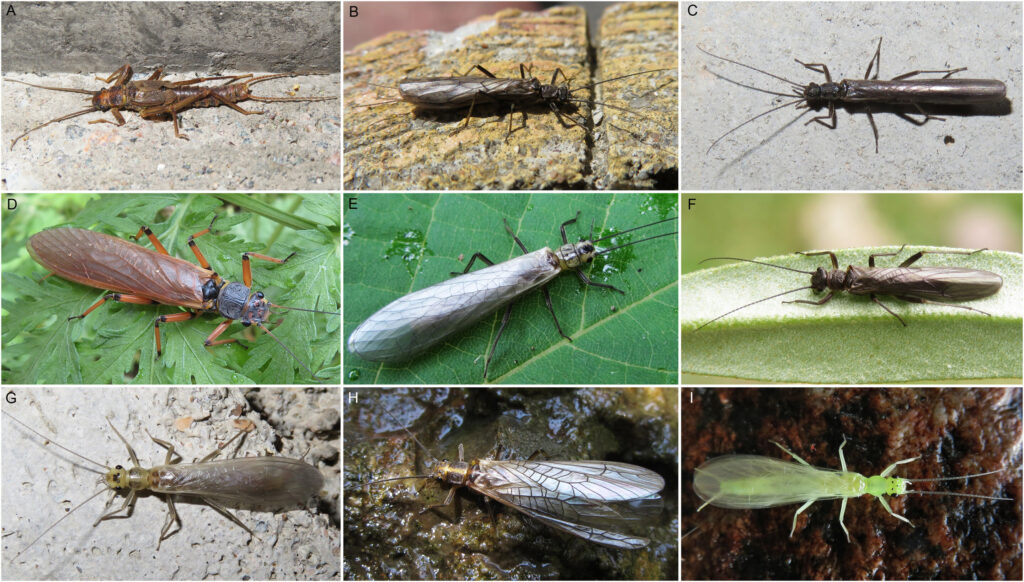
Stoneflies, belonging to the order Plecoptera, are among the most ancient lineages of winged insects, playing a crucial role as bioindicators for assessing freshwater ecosystem health. Despite their ecological and evolutionary significance, constructing a comprehensive phylogenetic framework for stoneflies has been a longstanding challenge. This difficulty arises from an incomplete fossil record, complex morphological evolution, and limited genomic sampling.
In a groundbreaking study, a collaborative research team has tackled these challenges by analyzing mitochondrial genome data from 97 stonefly species, encompassing all 17 extant families of the order. The team applied an integrative analytical framework that combines multiple evolutionary models to resolve the phylogenetic puzzle. Led by Prof. Cai Chenyang from the Nanjing Institute of Geology and Paleontology and Prof. Du Yuzhou from Yangzhou University, the findings were published in the journal iScience.
Reconstructing Stonefly Phylogeny
The research team successfully reconstructed the backbone phylogeny for stoneflies, clarifying evolutionary relationships across major lineages, resolving critical divergence events, and establishing a refined temporal timeline for stonefly evolution. These findings provide pivotal molecular and chronological evidence to understand the origin, adaptation, and radiation of this ancient insect group.
With approximately 4,000 extant stonefly species identified and their morphology extensively studied, two core questions have persisted in entomology: the precise placement of stoneflies within the broader insect tree of life and the evolutionary relationships between their families. A significant unresolved issue has been the basal relationships between Euholognatha and Systellognatha, the two major suborders of Plecoptera, due to limitations in gene sampling and evolutionary modeling in prior research.
Innovative Approaches and Key Findings
To overcome these limitations, the researchers sequenced the mitochondrial genomes of 29 extant stonefly species and combined these with 68 publicly available datasets. This effort marked the first time a complete mitochondrial genomic representation has been achieved for all 17 stonefly families. The team employed both maximum likelihood and Bayesian inference approaches, focusing on advanced models like CAT-GTR, which effectively account for site heterogeneity in genomic data.
The analyses resolved the early diversification of Euholognatha and supported Scopuridae as the earliest-diverging lineage within this suborder. This finding aligns with existing morphological evidence and suggests that the loss of courtship behavior in Scopuridae is likely a secondary evolutionary reduction rather than an ancestral trait, according to the researchers.
“The study sheds new light on controversial taxa, identifying Taeniopterygidae as the sister group to Leuctridae,” noted Prof. Cai Chenyang.
Additionally, the research clarifies evolutionary relationships within Systellognatha, supporting Styloperlidae as the suborder’s earliest-diverging lineage. By integrating the latest paleontological and stratigraphic data, the team further reconstructed the temporal framework of stonefly evolution.
Implications and Future Directions
The results indicate that crown-group stoneflies originated during the Pennsylvanian period, approximately 323–299 million years ago. Major diversification events among extant stonefly families occurred between the Cisuralian period (299–272 million years ago) and the Early Triassic (252–247 million years ago).
This development represents a significant advancement in understanding stonefly evolution and highlights the importance of integrating genomic data with paleontological insights. The study not only resolves long-standing debates in entomology but also sets a precedent for future research on ancient insect lineages.
As researchers continue to explore the evolutionary history of stoneflies, the methodologies and findings from this study may serve as a blueprint for similar investigations into other ancient insect groups. The integration of comprehensive genomic data with advanced analytical frameworks holds promise for unraveling the complexities of insect evolution and biodiversity.





